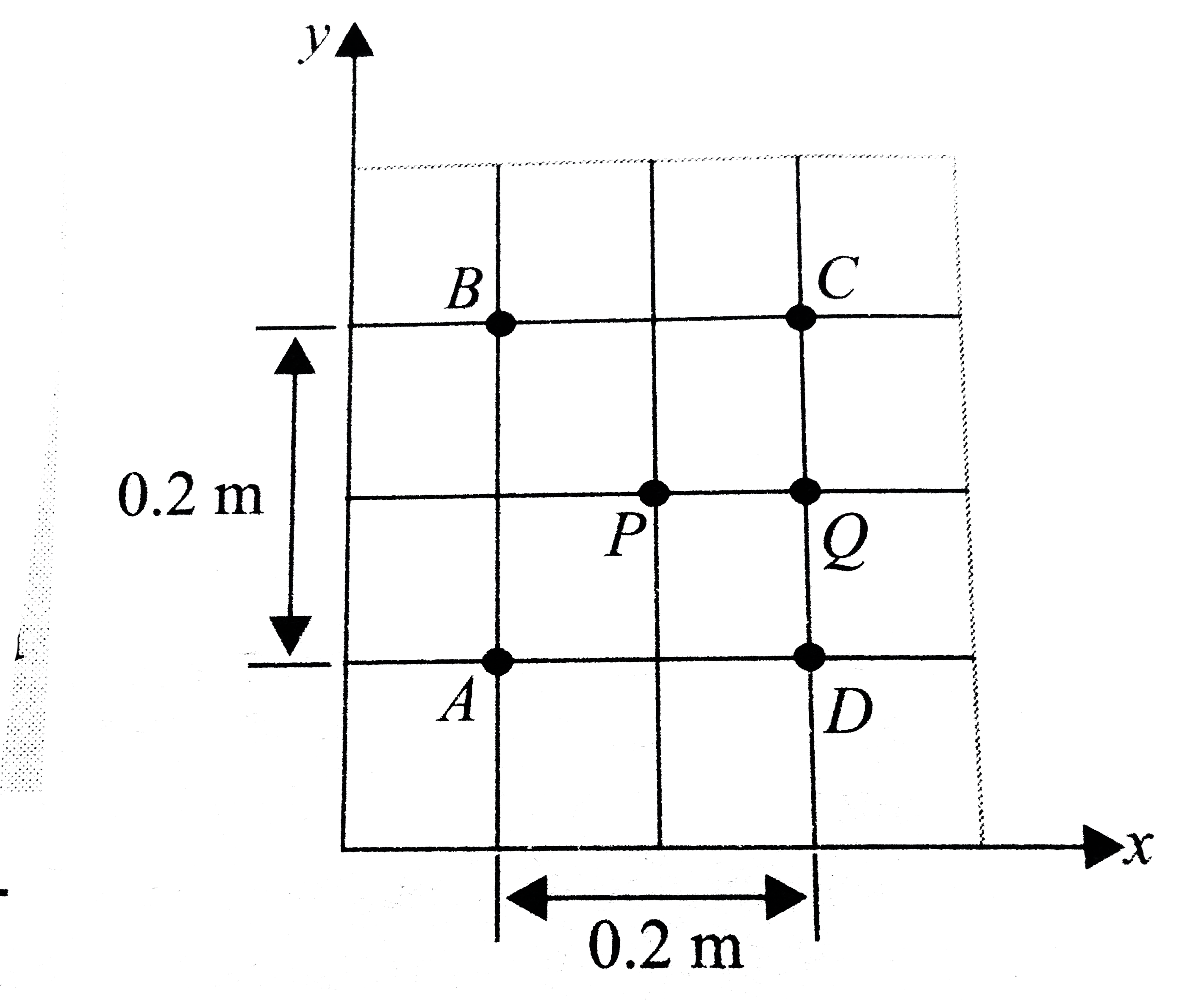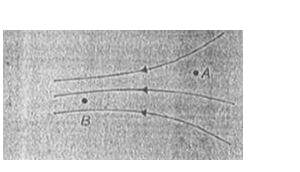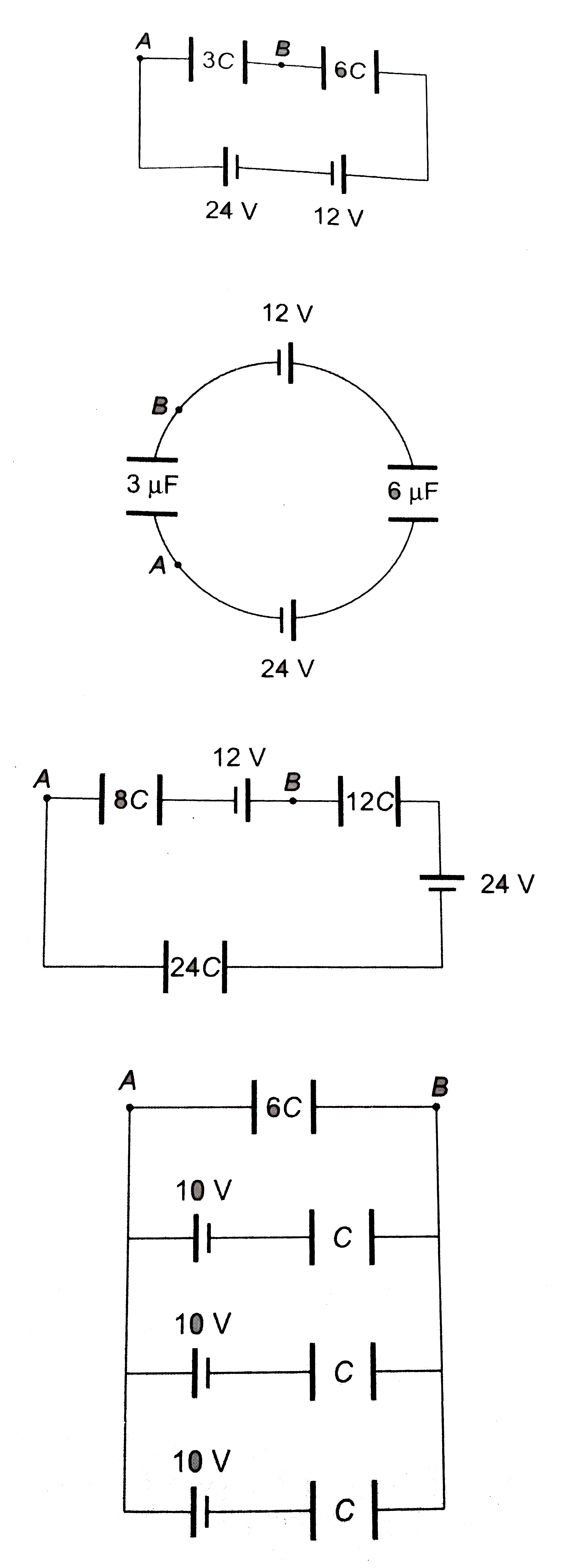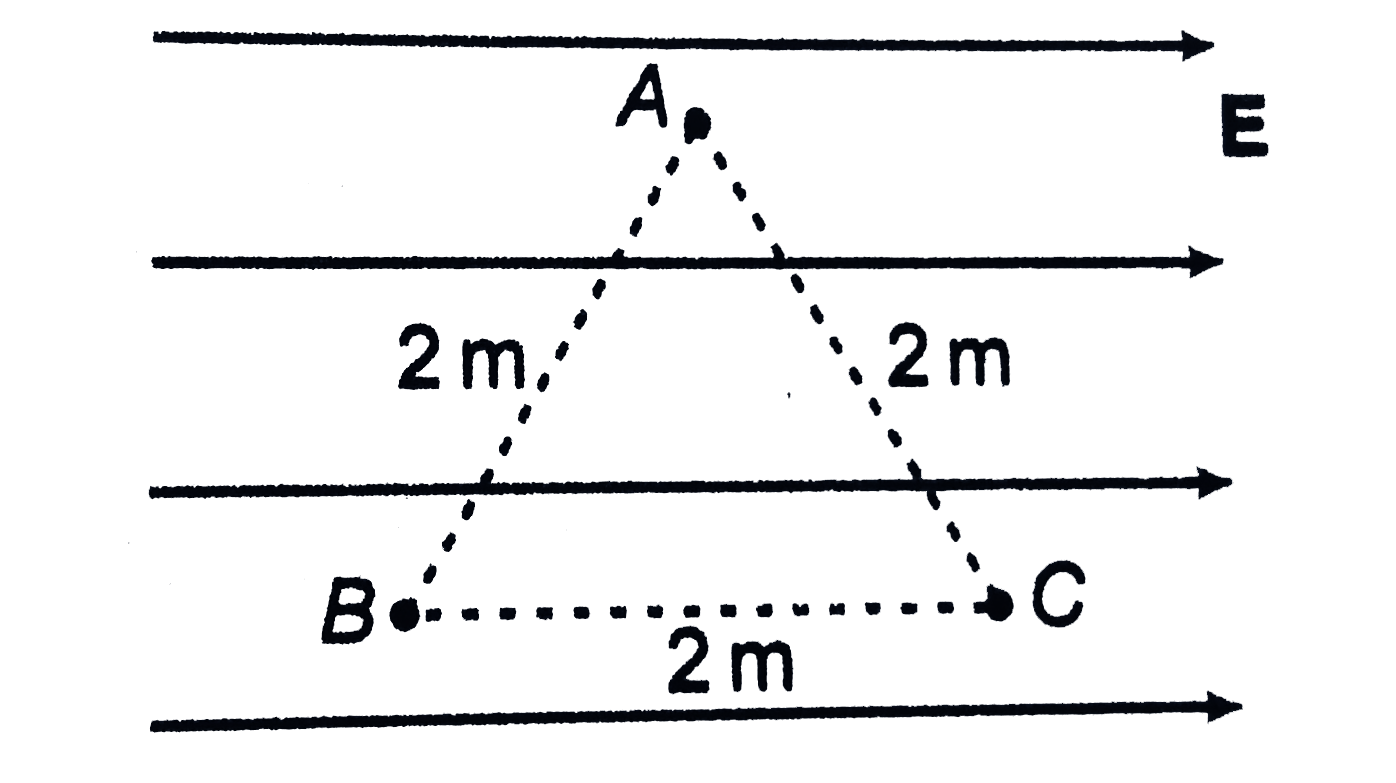A, B, C, D, P, and Q are points in a uniform electric field. The potentials at these points are V(A)=2V.V(P)=V(B)=V(D)=5V, and V(C)=8V. Find the electric field at P.
 .
.
Video Solution
Text Solution
Method I : The component of electric field in x - direction is
Ex=−ΔVΔx=−[VD−VA](0.2)=−[5−2]0.2=−15Vm−1
Similarly,
Ey=−ΔVyΔy=−[VB−VA]0.2=−[5−2]0.2=−15Vm−1
Hence, electric field →E=Exˆi+Eyˆj=−15ˆi−15ˆj(Vm−1)
Method II : The points (B, p, and D) have same potential , hence, these points will lie on same equipotential surface. The separation between two rquipotentials is
AP=0.1×√2m
|E|(5−2)0.1√2=15√2Vm−1
EPA=15√2Vm−1
Here
→E=15√2cos45∘(−ˆi)+15√2sin45∘(−ˆj)
=−15ˆi−15ˆjVm−1.
 .
.
|
Updated on:21/07/2023
Topper's Solved these Questions
- BOOK - CENGAGE PHYSICSCHAPTER - ELECTRIC POTENTIALEXERCISE - Examples9videos
ELECTRIC POTENTIAL
- BOOK - CENGAGE PHYSICSCHAPTER - ELECTRIC POTENTIALEXERCISE - Exercise 3.123videos
ELECTRIC POTENTIAL
- BOOK - CENGAGE PHYSICSCHAPTER - ELECTRIC FLUX AND GAUSS LAWEXERCISE - MCQ s38videos
ELECTRIC FLUX AND GAUSS LAW
- BOOK - CENGAGE PHYSICSCHAPTER - ELECTRICAL MEASURING INSTRUMENTSEXERCISE - M.C.Q2videos
ELECTRICAL MEASURING INSTRUMENTS
Similar Questions
Knowledge Check
- Question 1 - Select One
In figure two points A and B are located in a region of electric field . The potential difference VB−VA is
 APositiveBNegativeCZeroDNone of these
APositiveBNegativeCZeroDNone of these - Question 2 - Select One
A uniform electric field exists in x−y plane. The potential of points A(−2m,2m),B(−2m,2m) and C(2m,4m) are 4V,16V and 12V respectively. The electric field is
A(4ˆi+5ˆj)VmB(3ˆi+4ˆj)VmC−(3ˆi+4ˆj)VmD(3ˆi+4ˆj)Vm - Question 3 - Select One
Figure shows four points A, B, C and D in uniform electric field →E. The line AB and CD are perpendicular and BC and AD are parallel to the field lines. If VA,VB,VCandVD are electric potential at A, B,C,D choose the correct option.
 AVA=VB=VC=VDB(VA=VB)>(VC=VD)C(VA=VB)<(VC=VD)DVA>VB=VC>VD
AVA=VB=VC=VDB(VA=VB)>(VC=VD)C(VA=VB)<(VC=VD)DVA>VB=VC>VD
In the uniform electric field shown in figure, find :
a. VA−VD
b. VA−VC
c. VB−VD
d. VC−VD
 View Solution
View SolutionFind the potential difference between points A and B (VB−VA) in the network
 View Solution
View SolutionFind the potential difference between the points A and B.
(a)
If VA−VB=5V, find voltage across each capacitor.
 View Solution
View SolutionIn uniform electric field E=10N/C, find

a. VA−VB , b. VB−VCView SolutionA metallic square loop PQRS is moving in its own plane with velocity v in a uniform magnetic field perpendicular to its plane as shown in Fig. If VP,VQ,VRandVS are the potentials of points P, Q, R and S then which of the following is an incorrect statement?
 View Solution
View Solution

